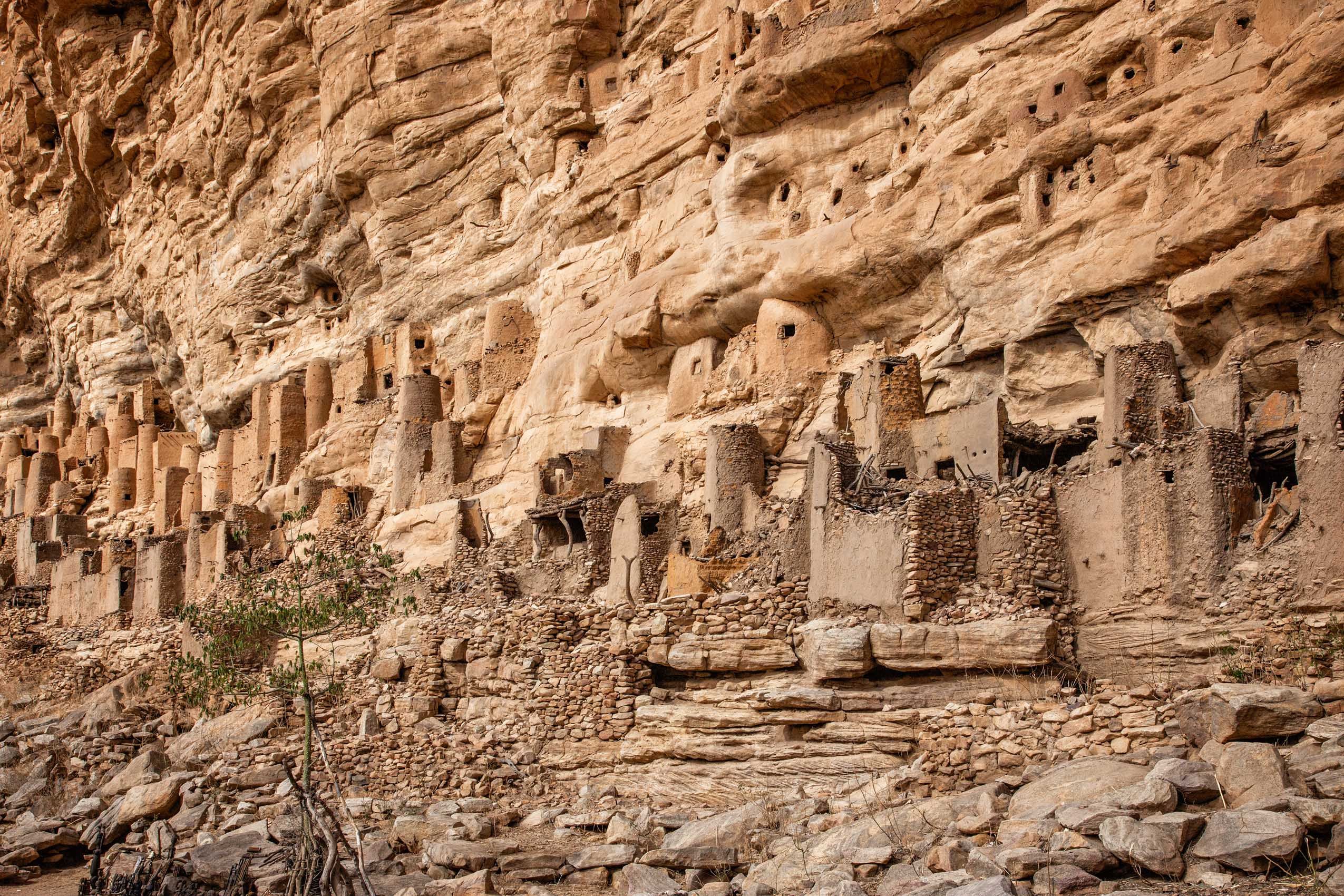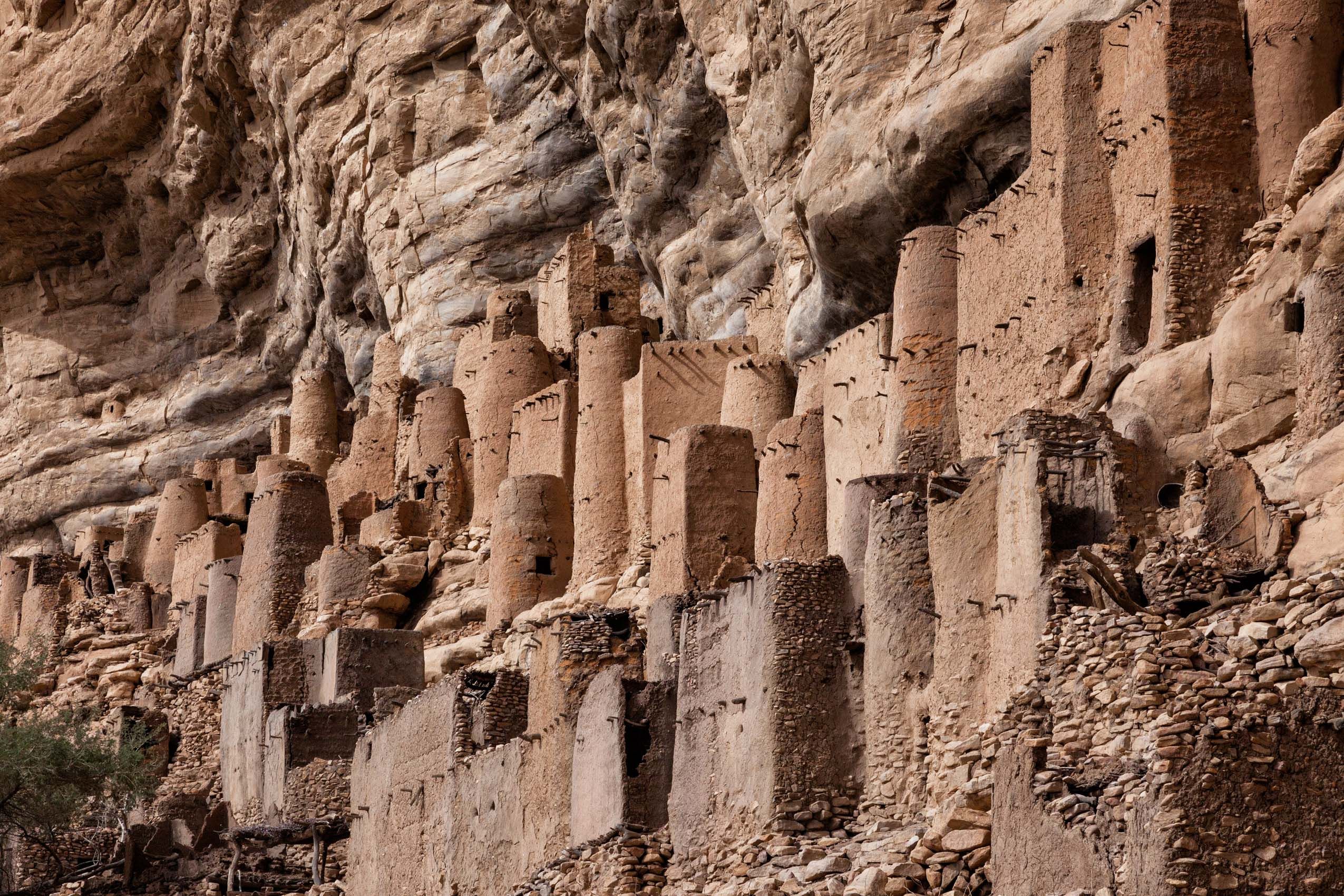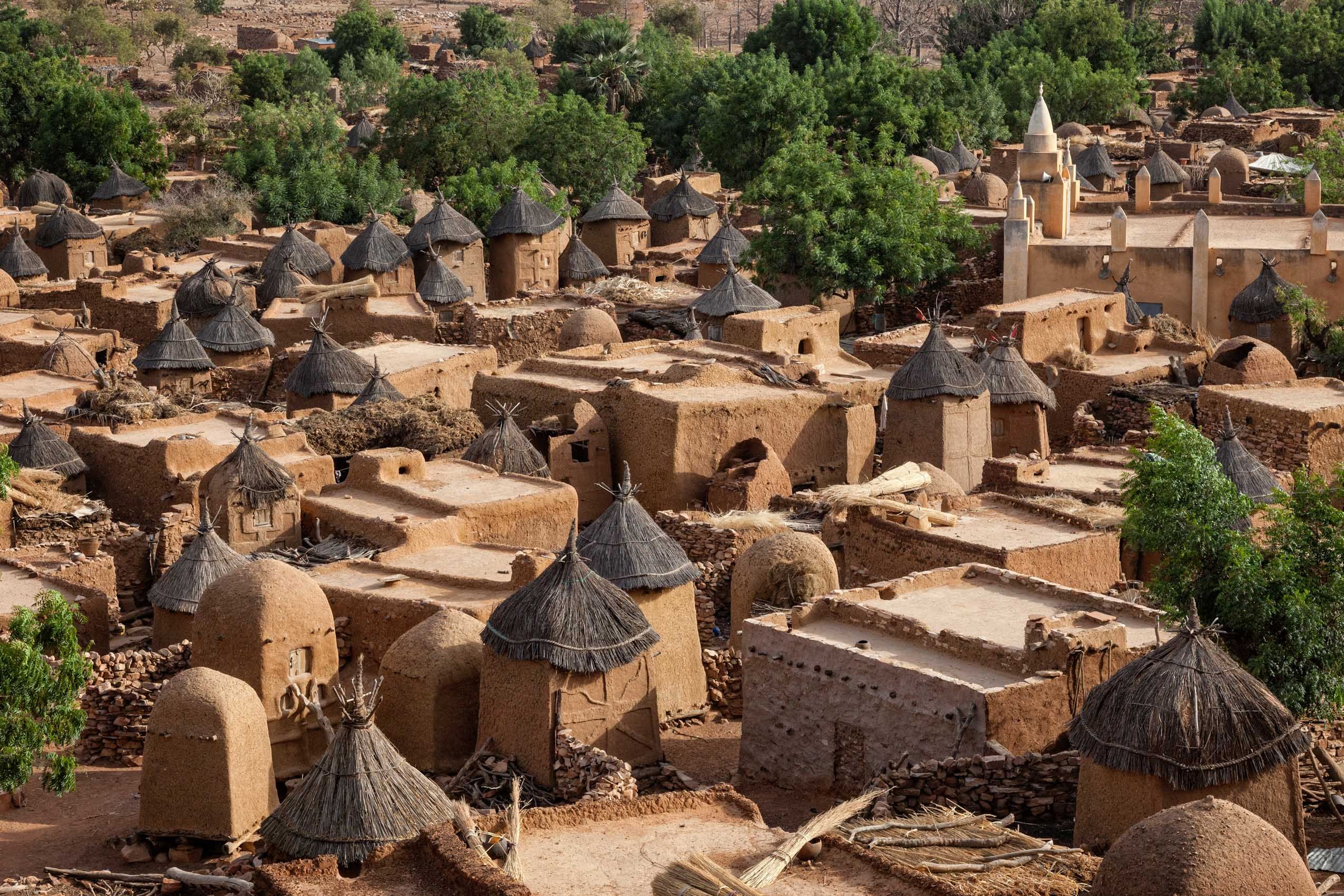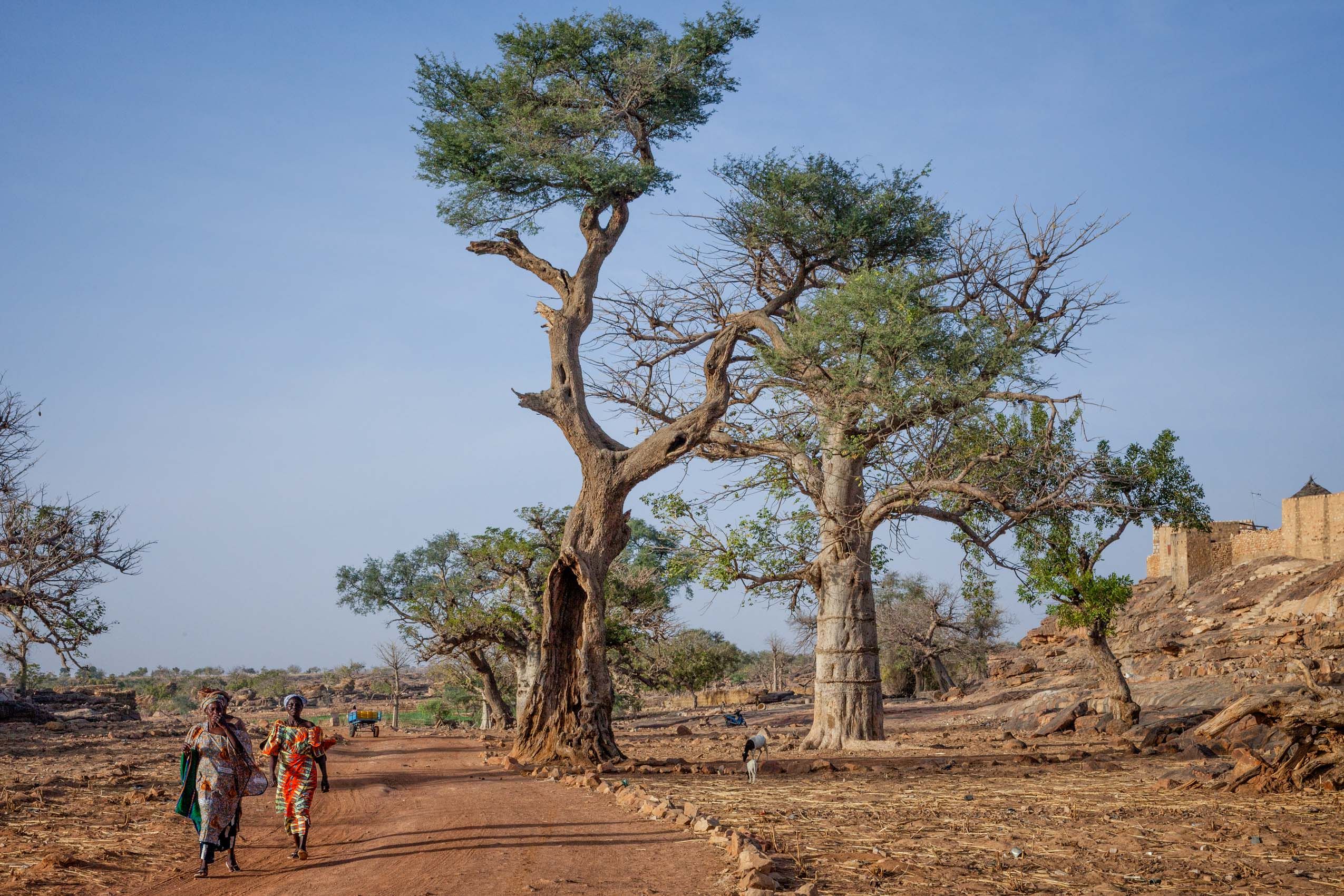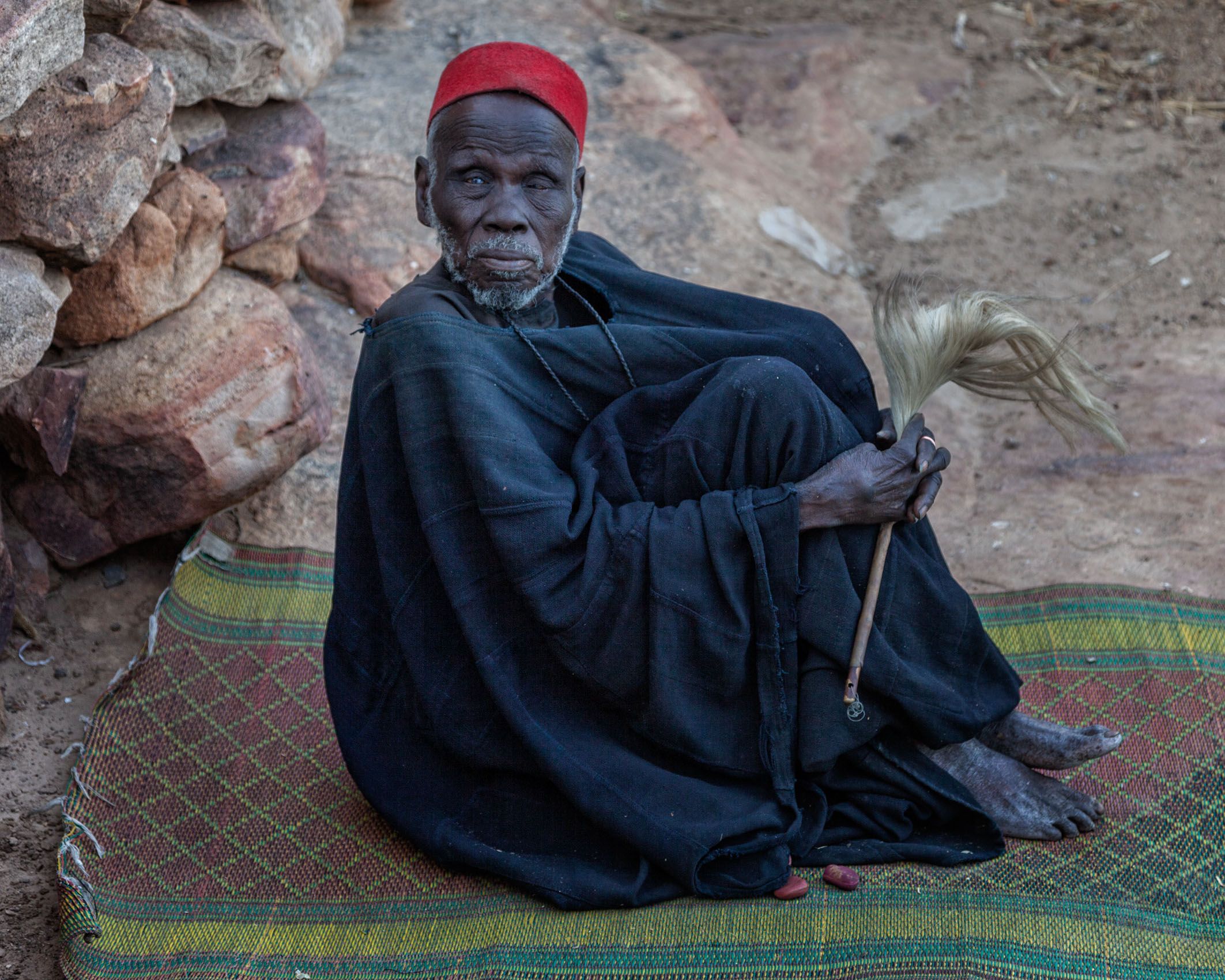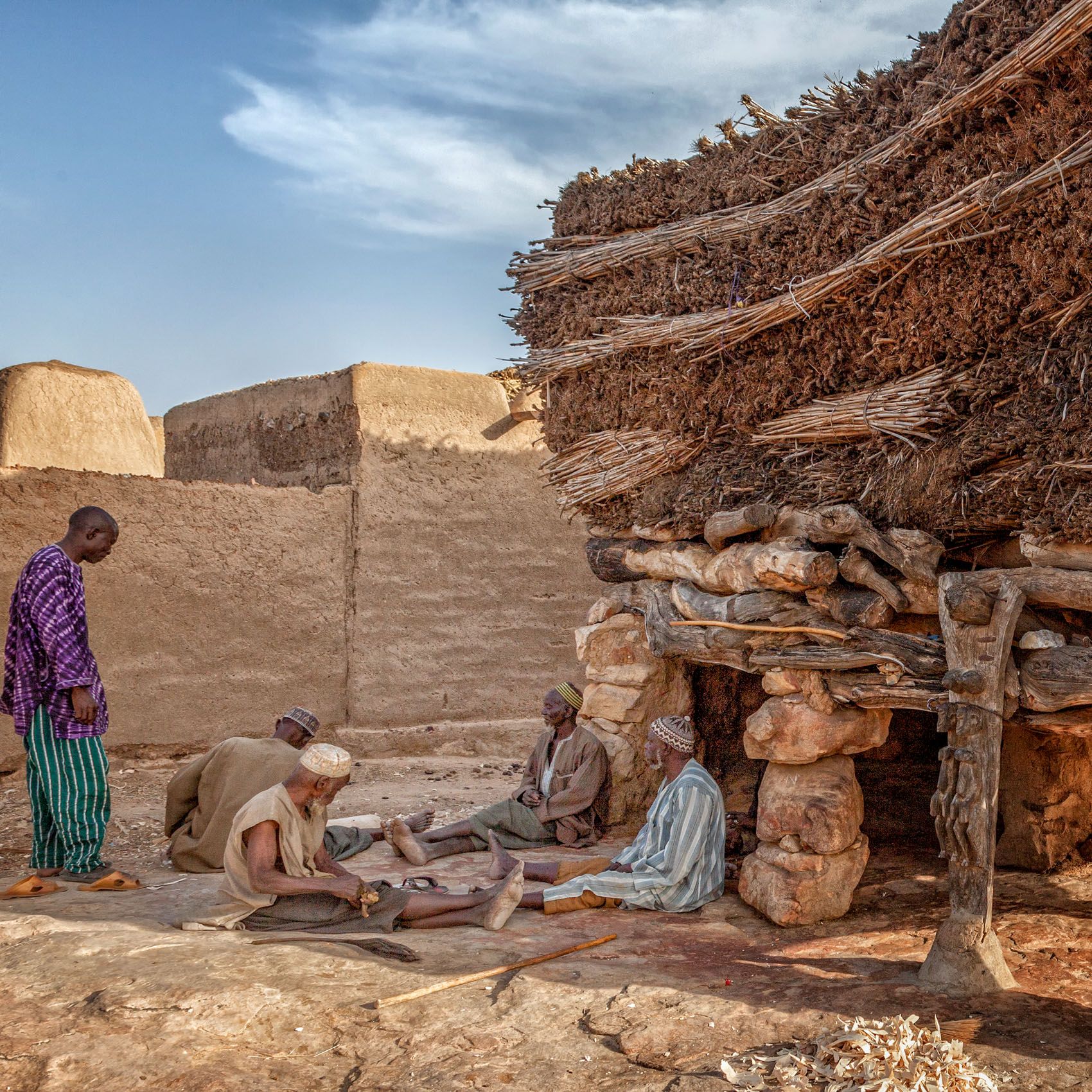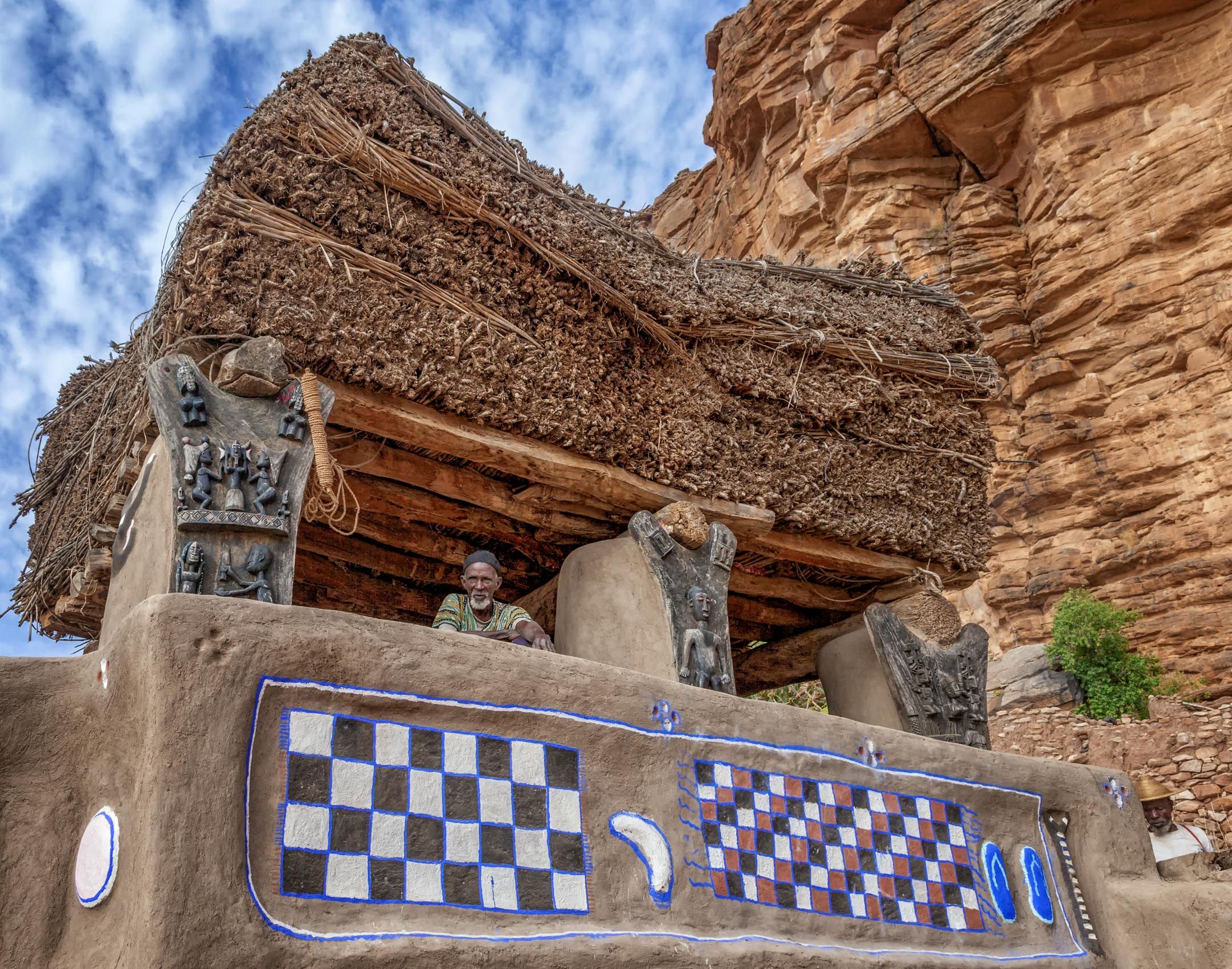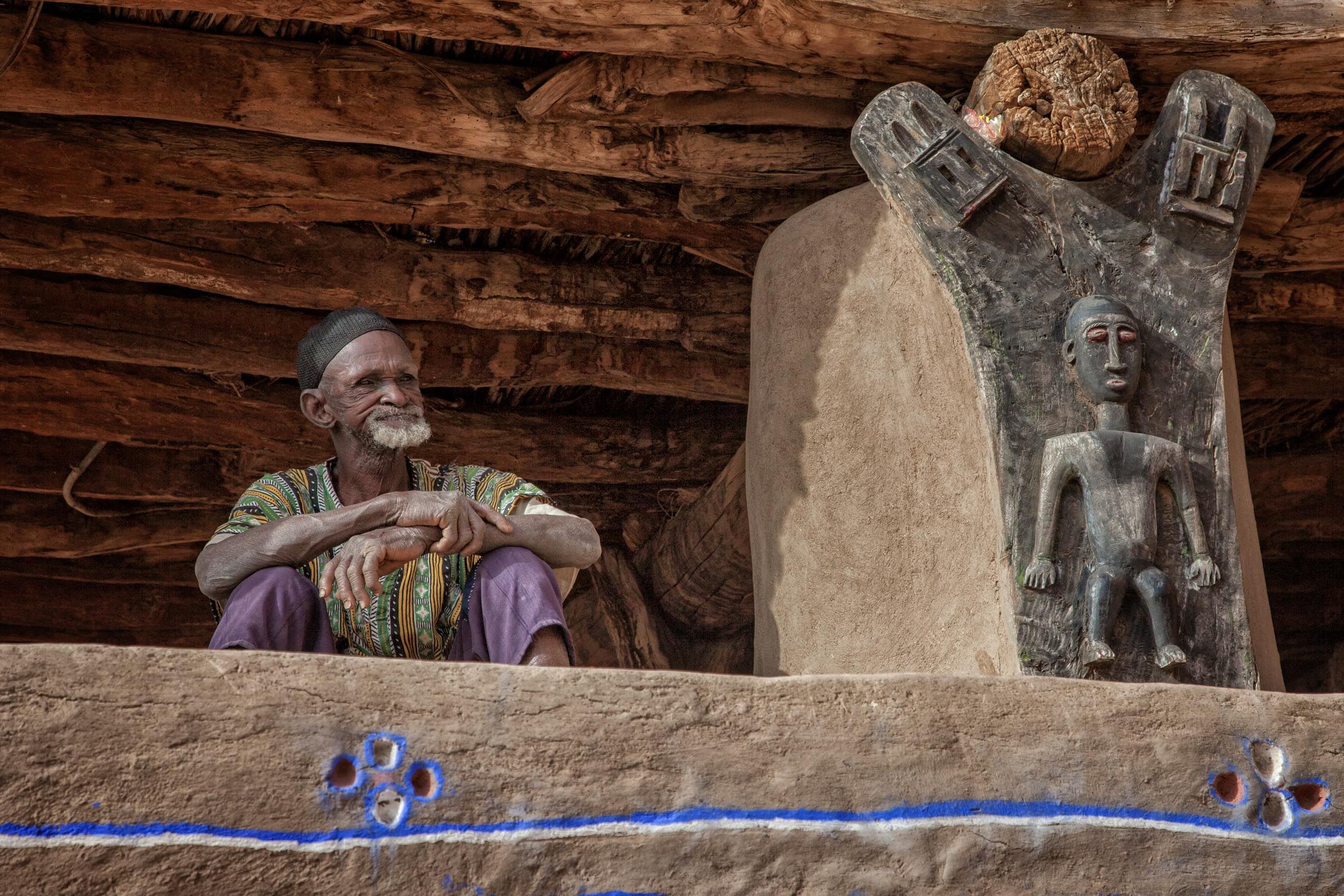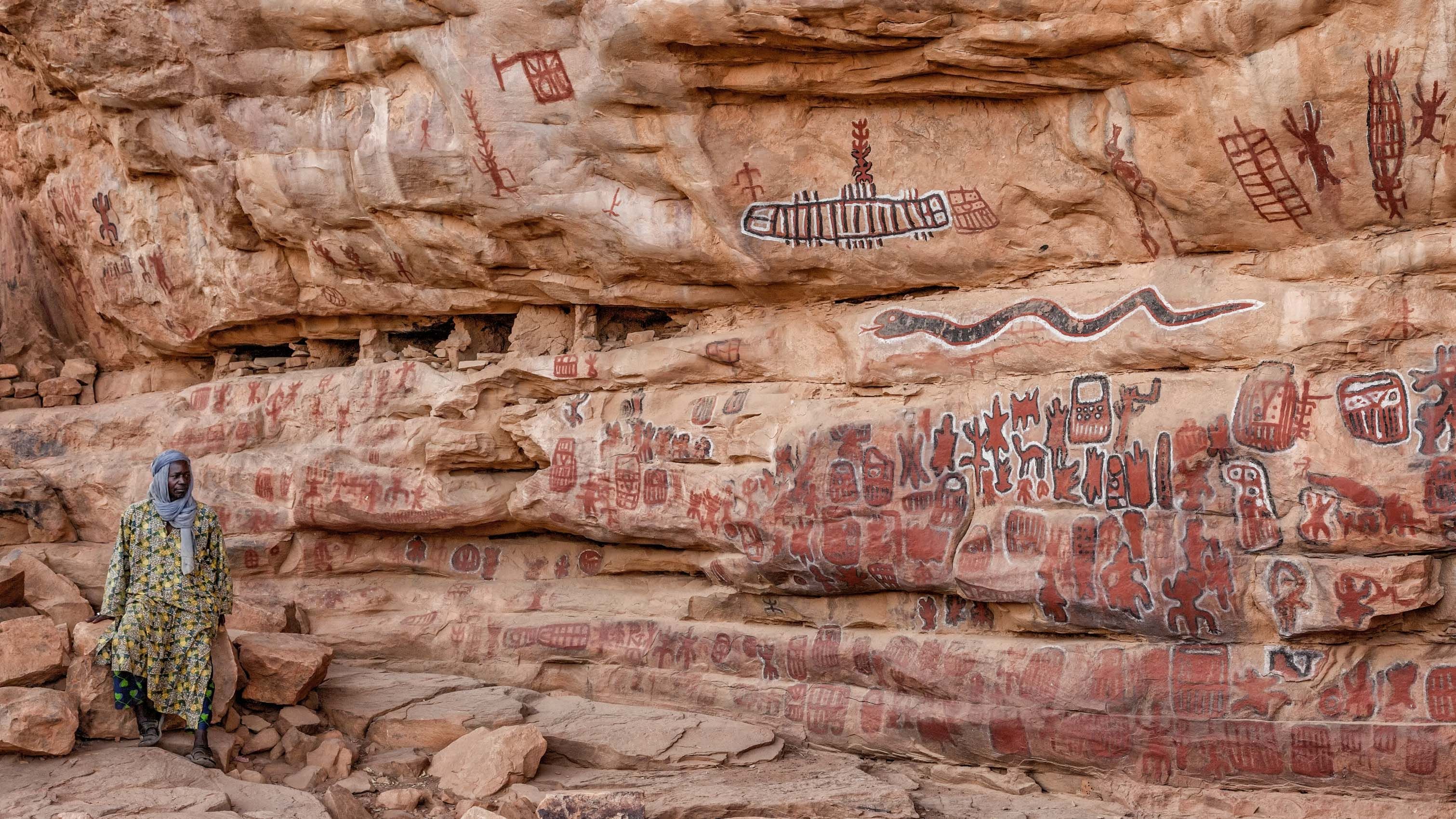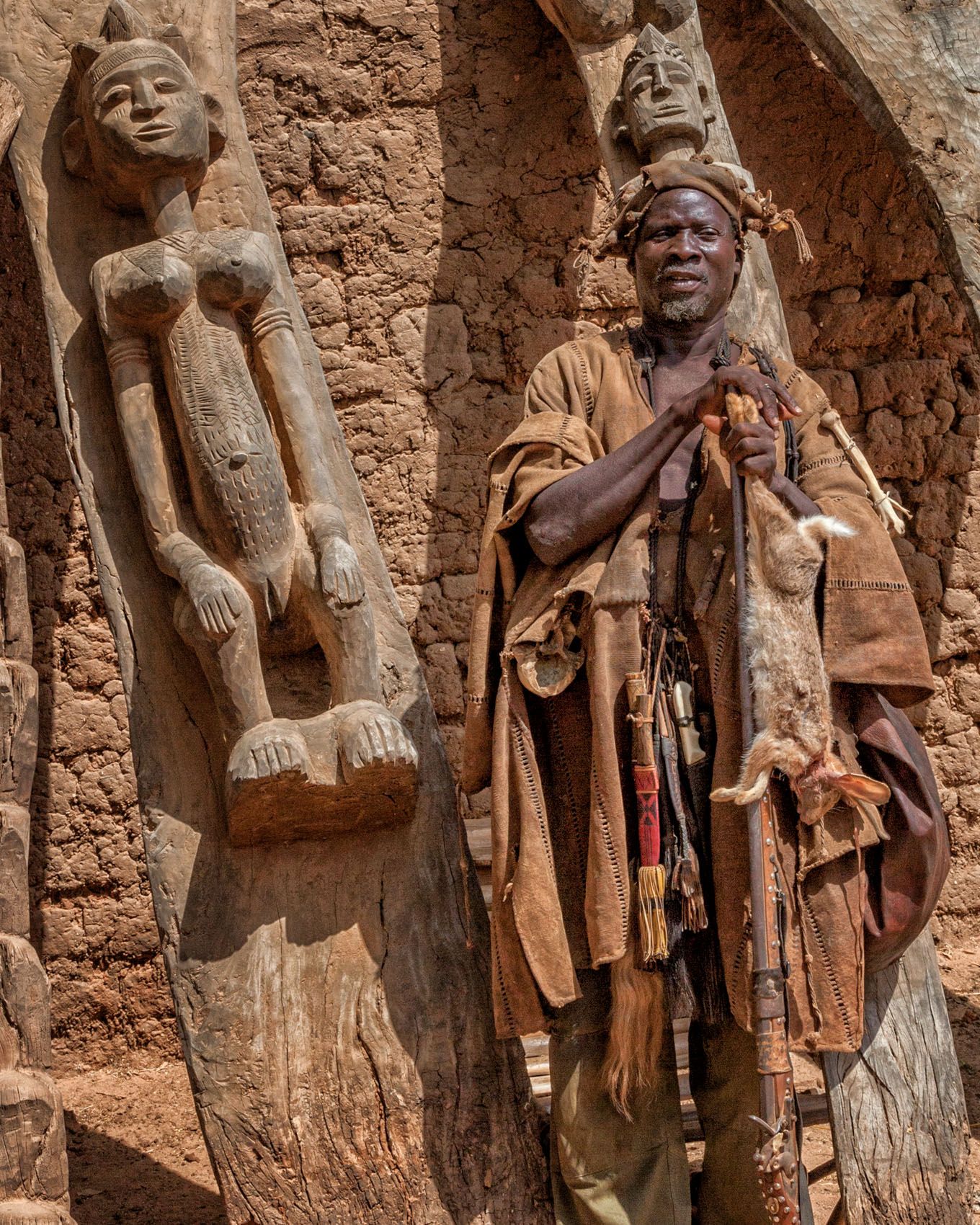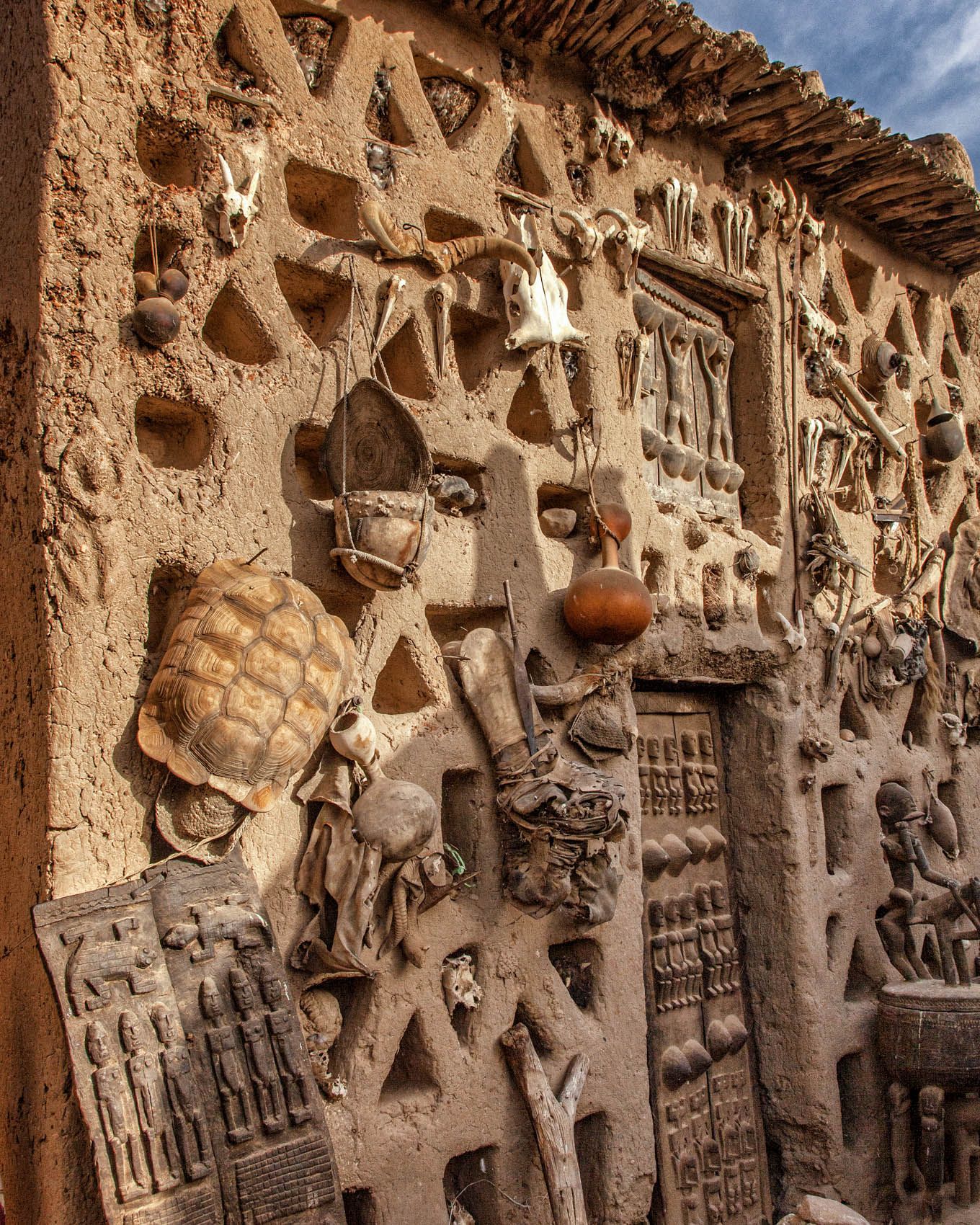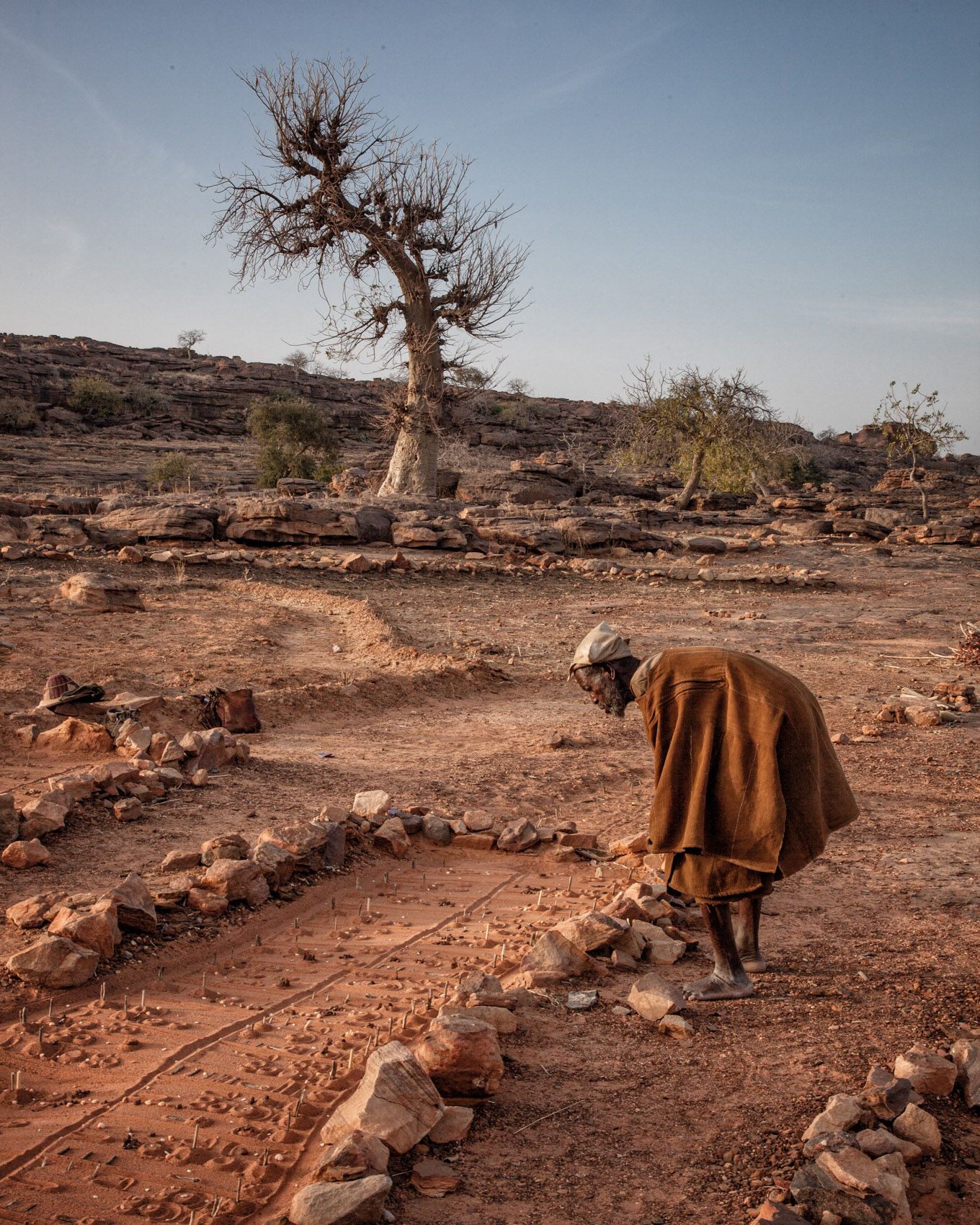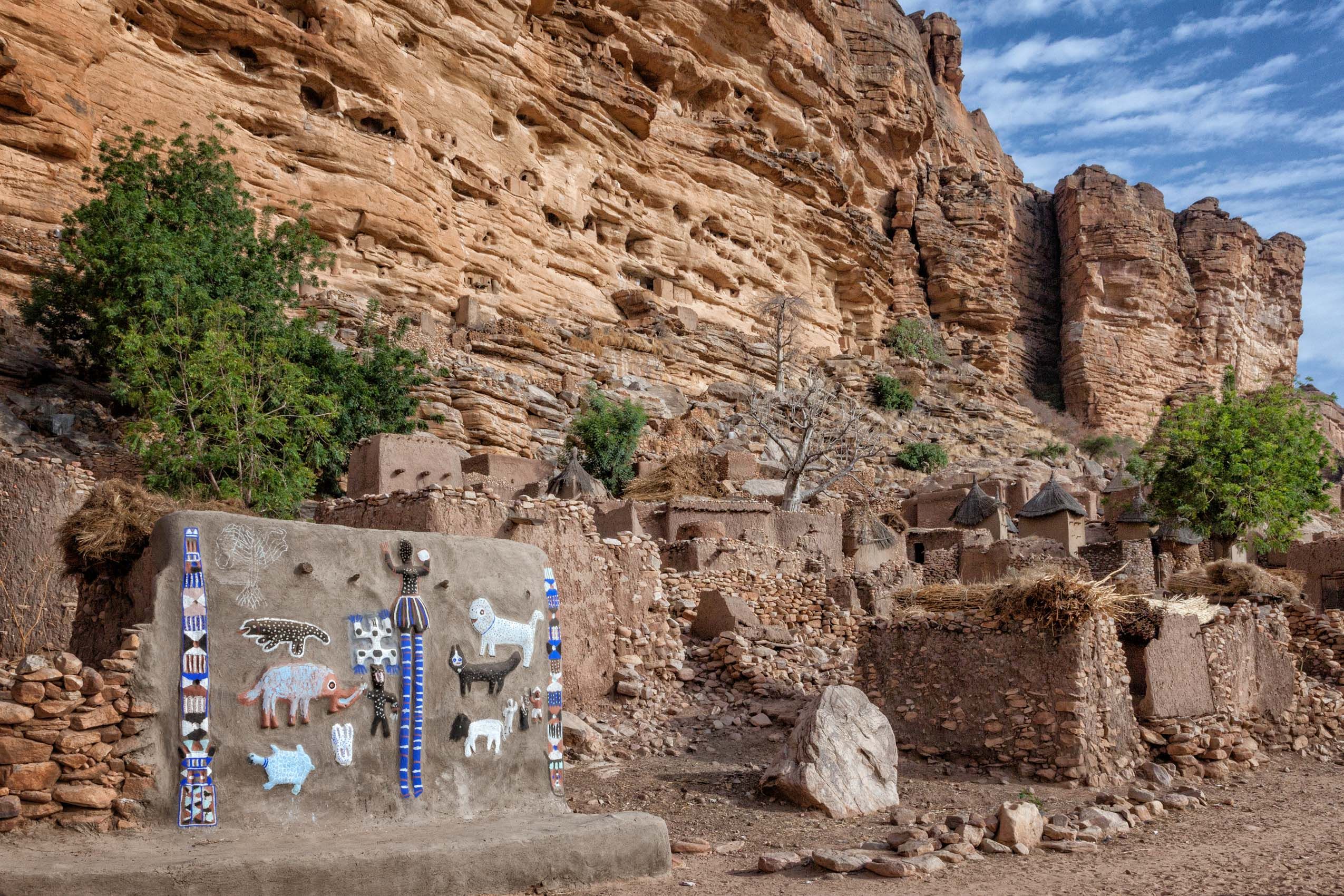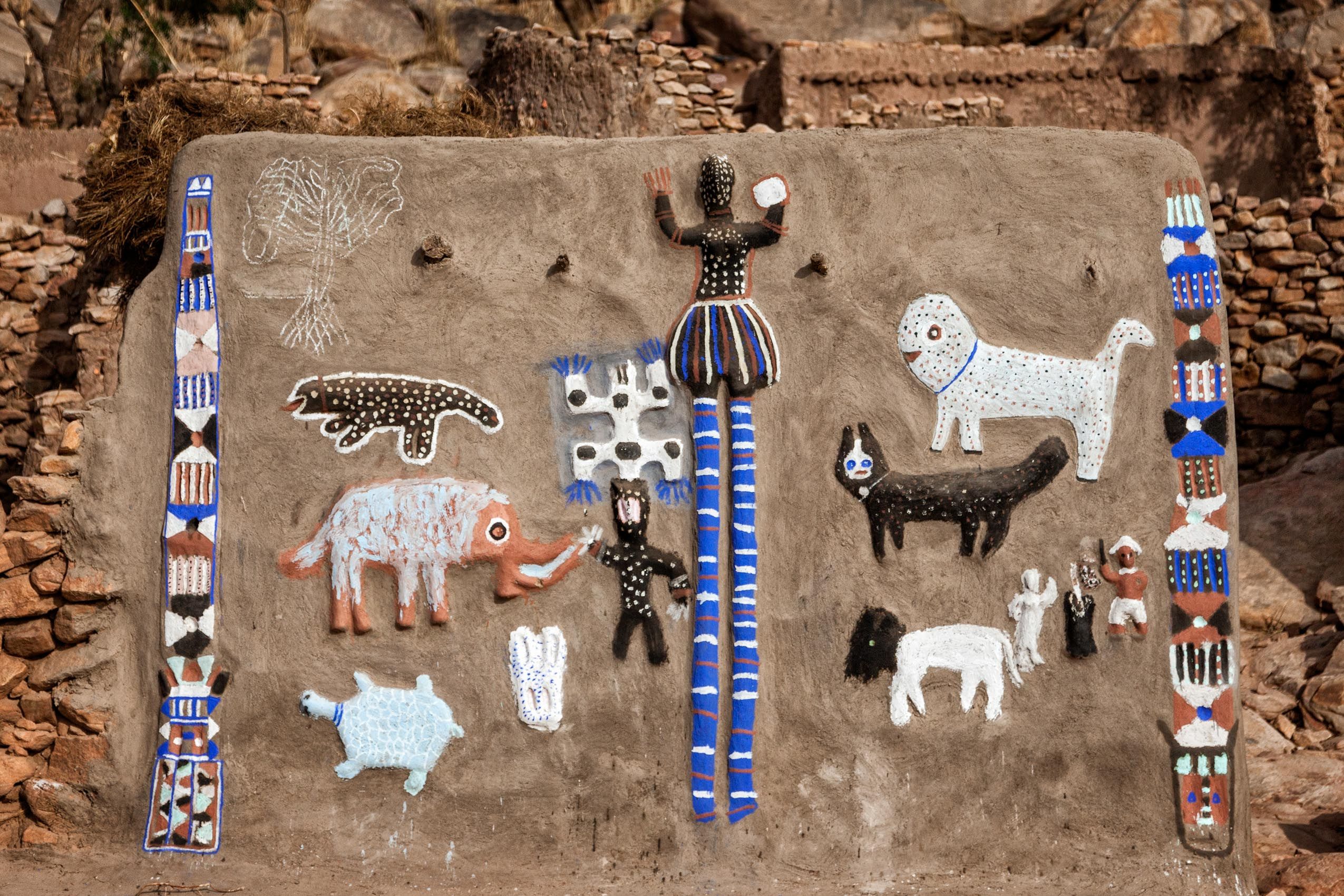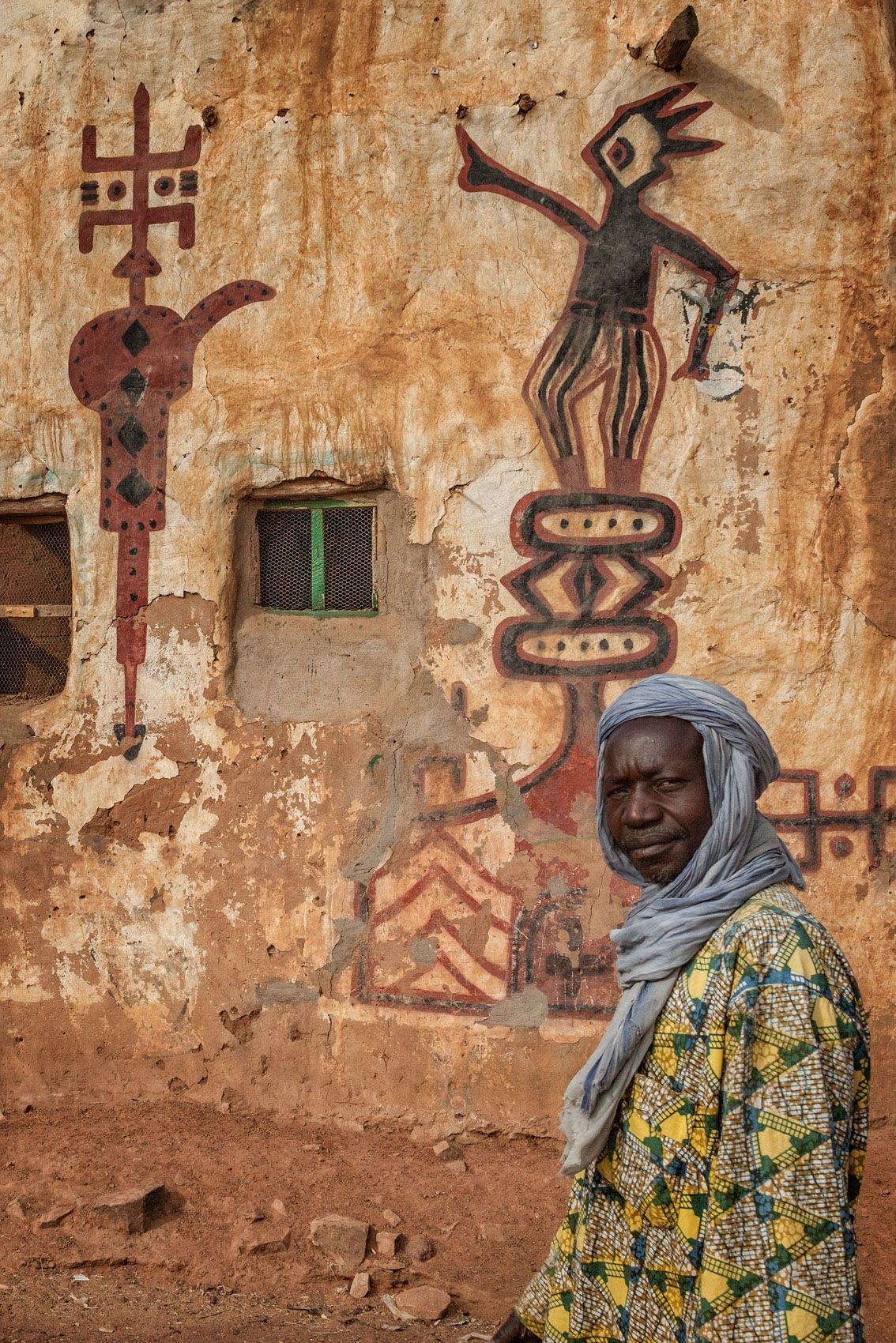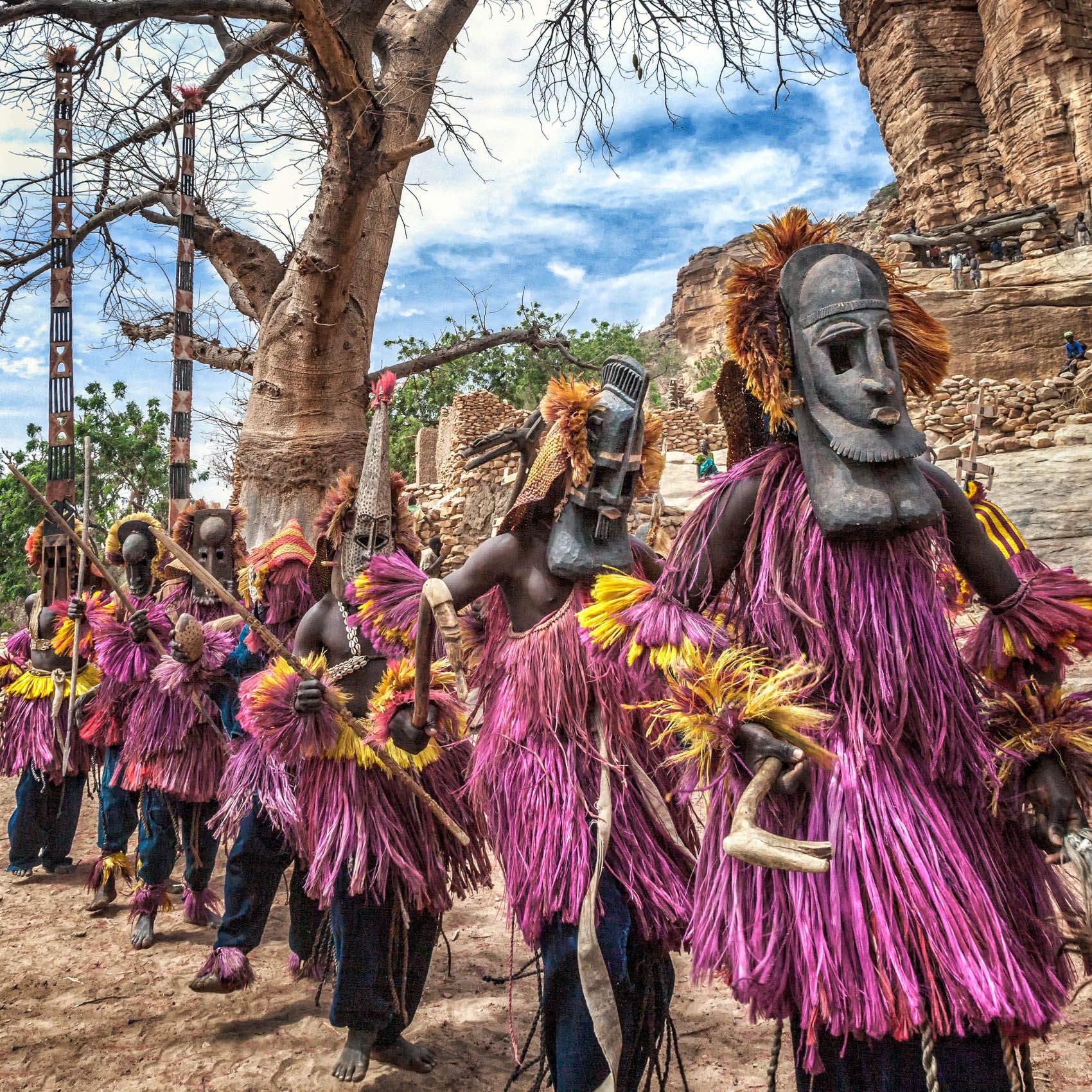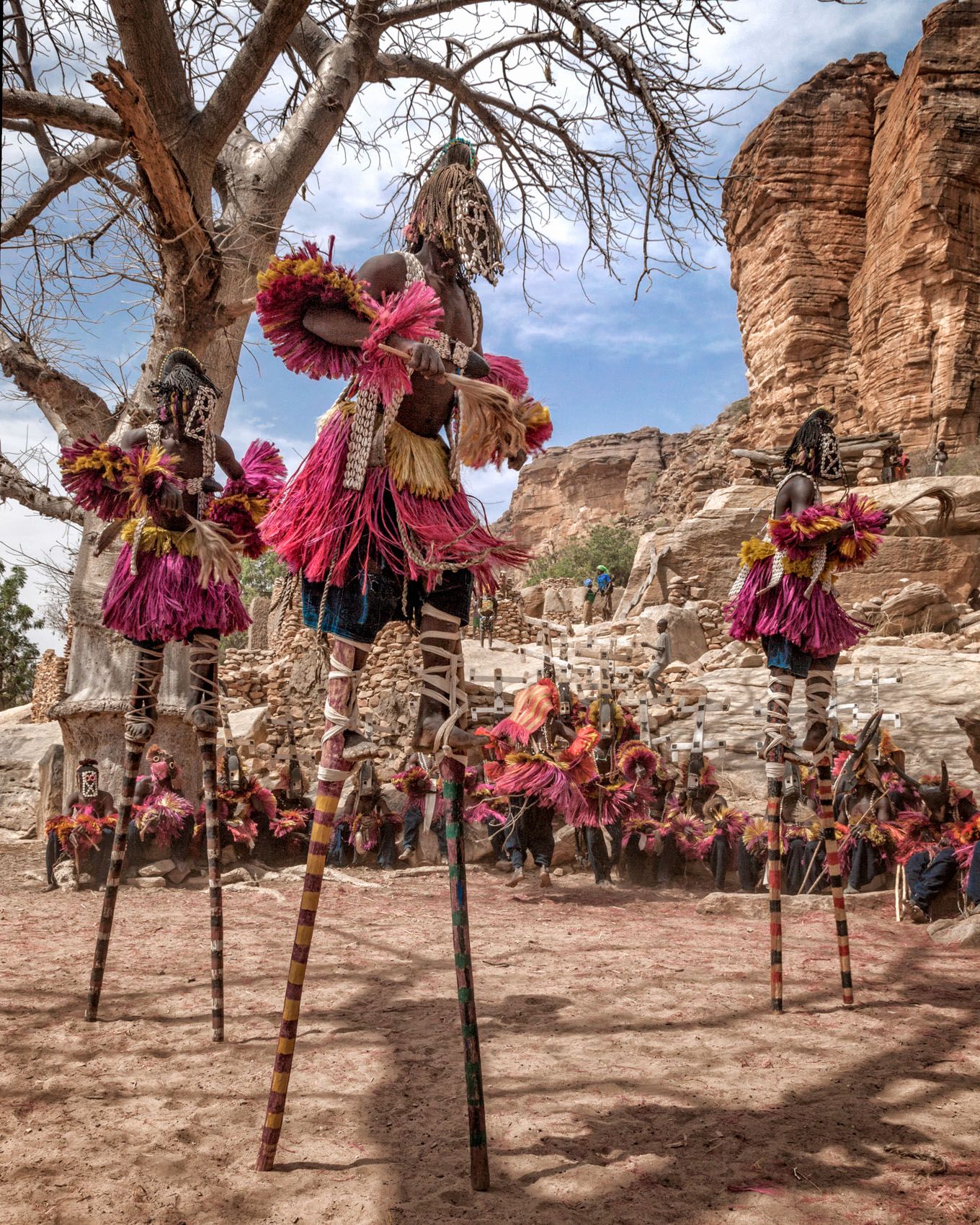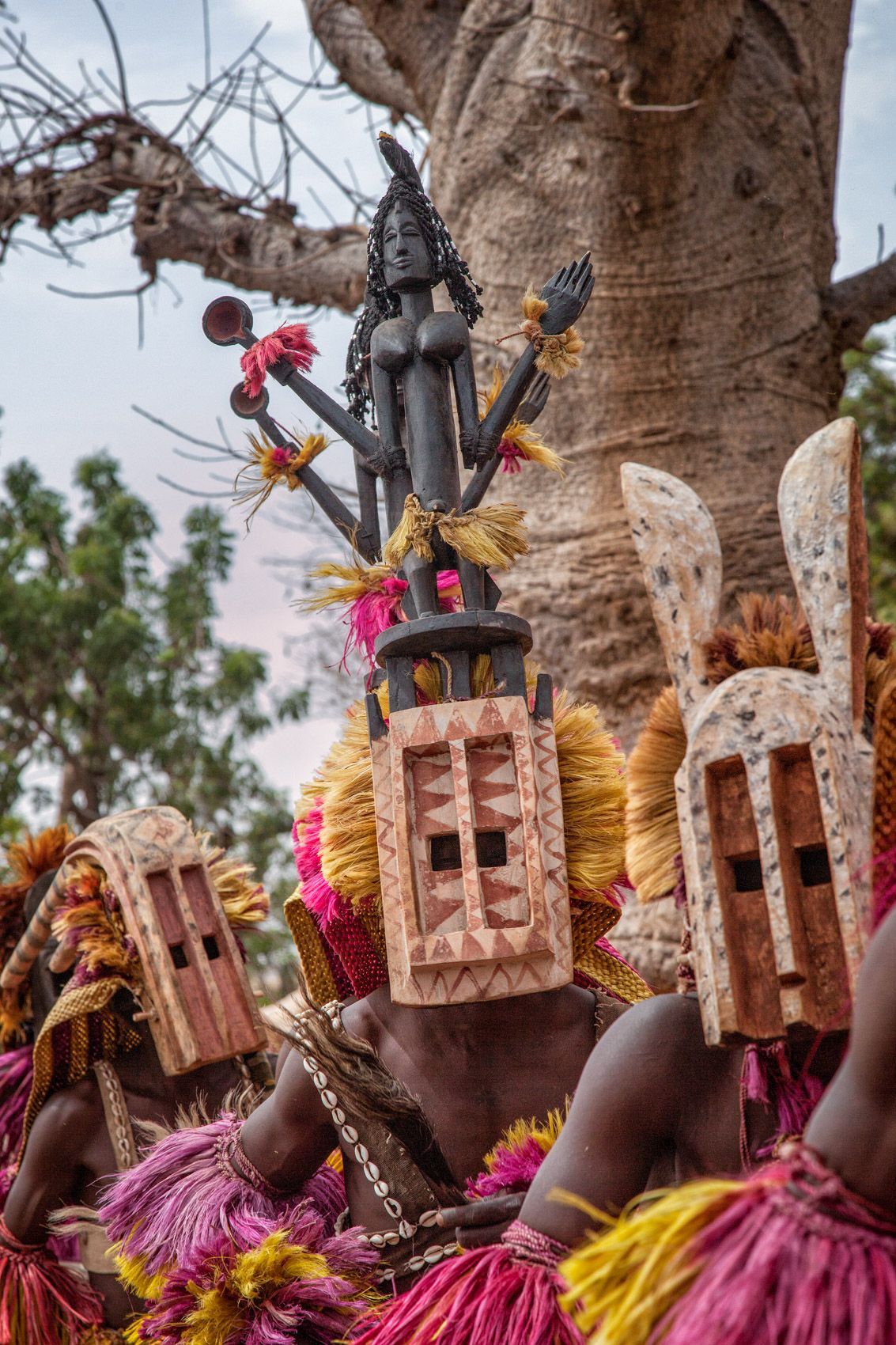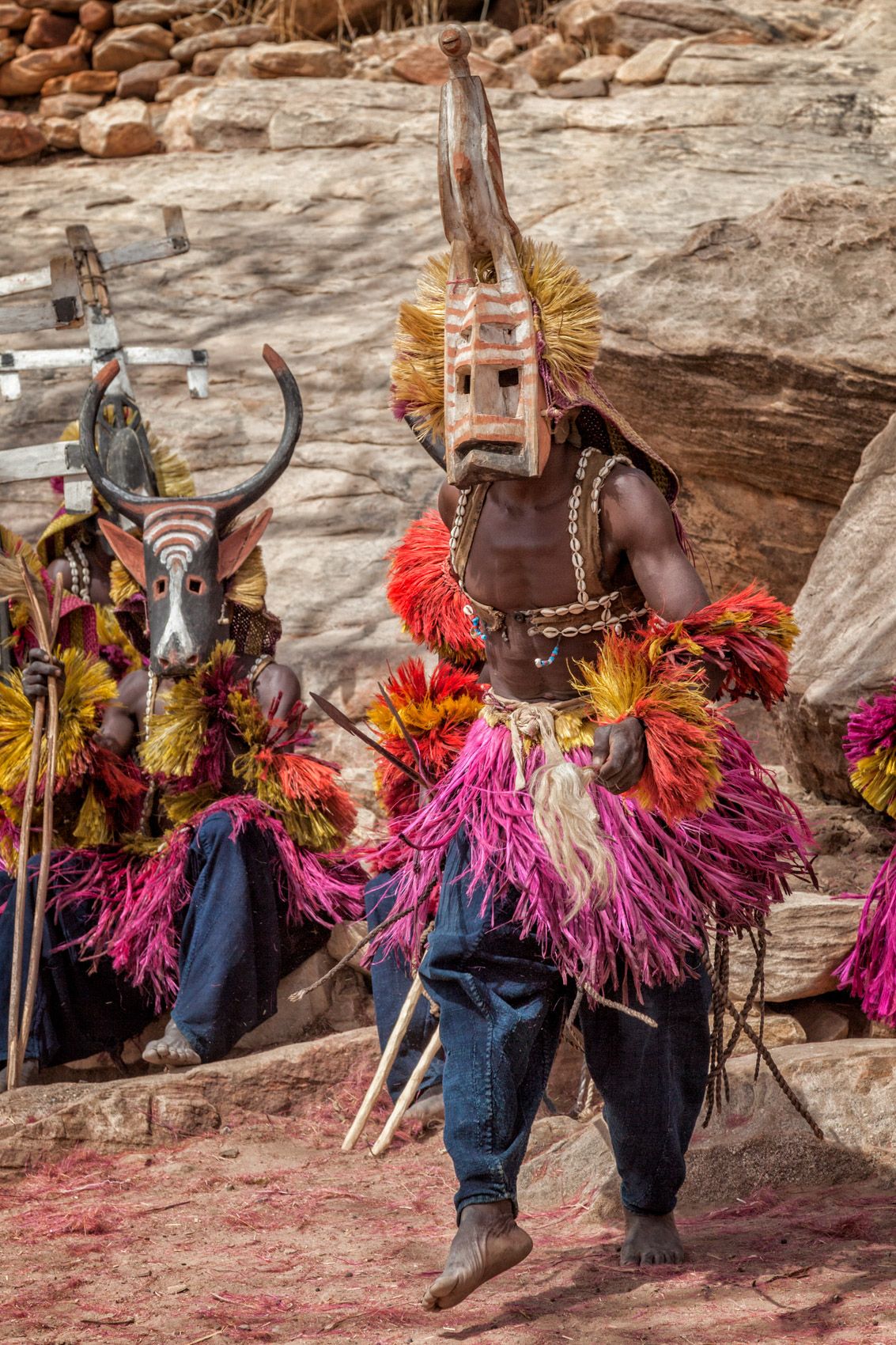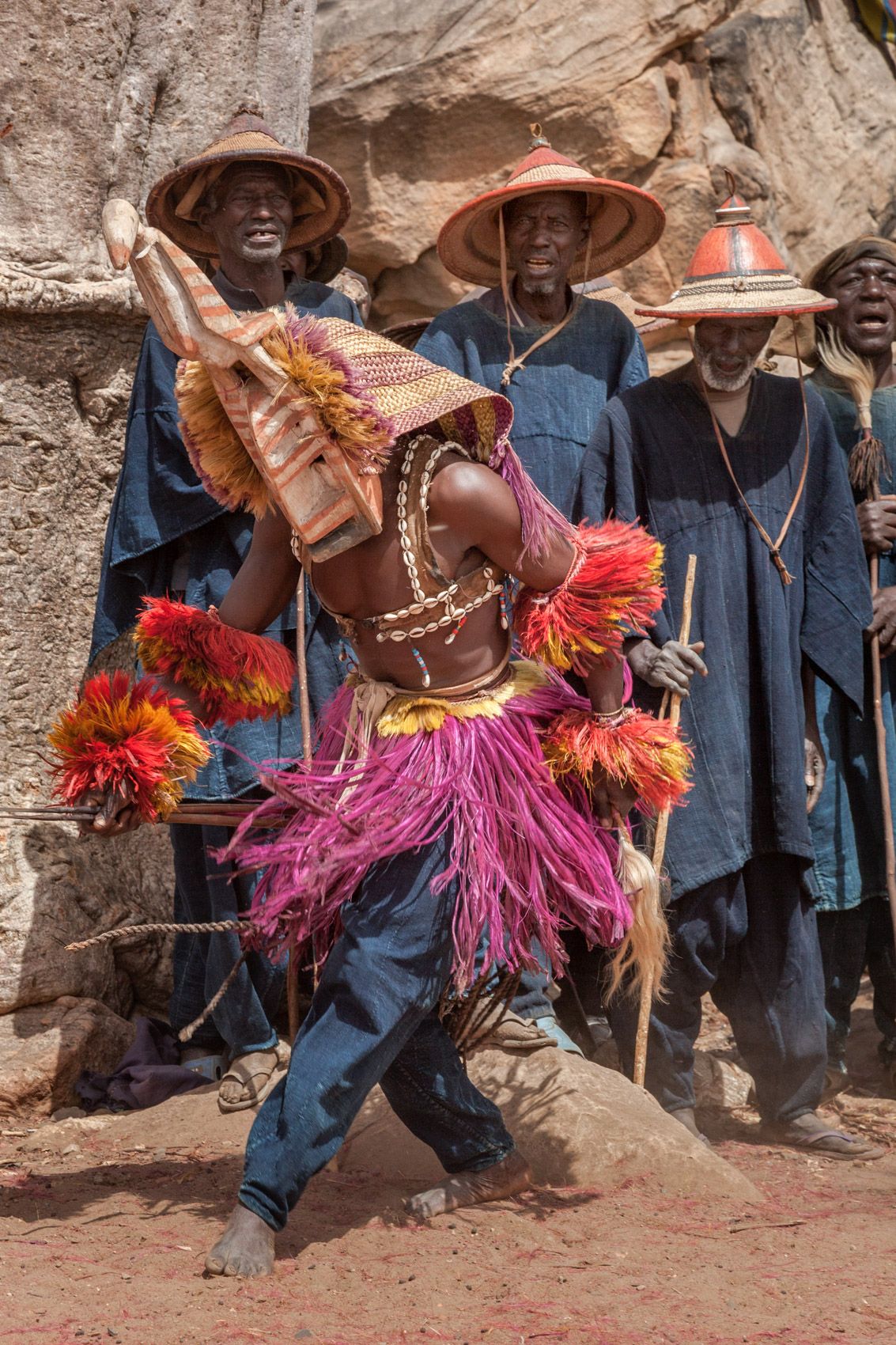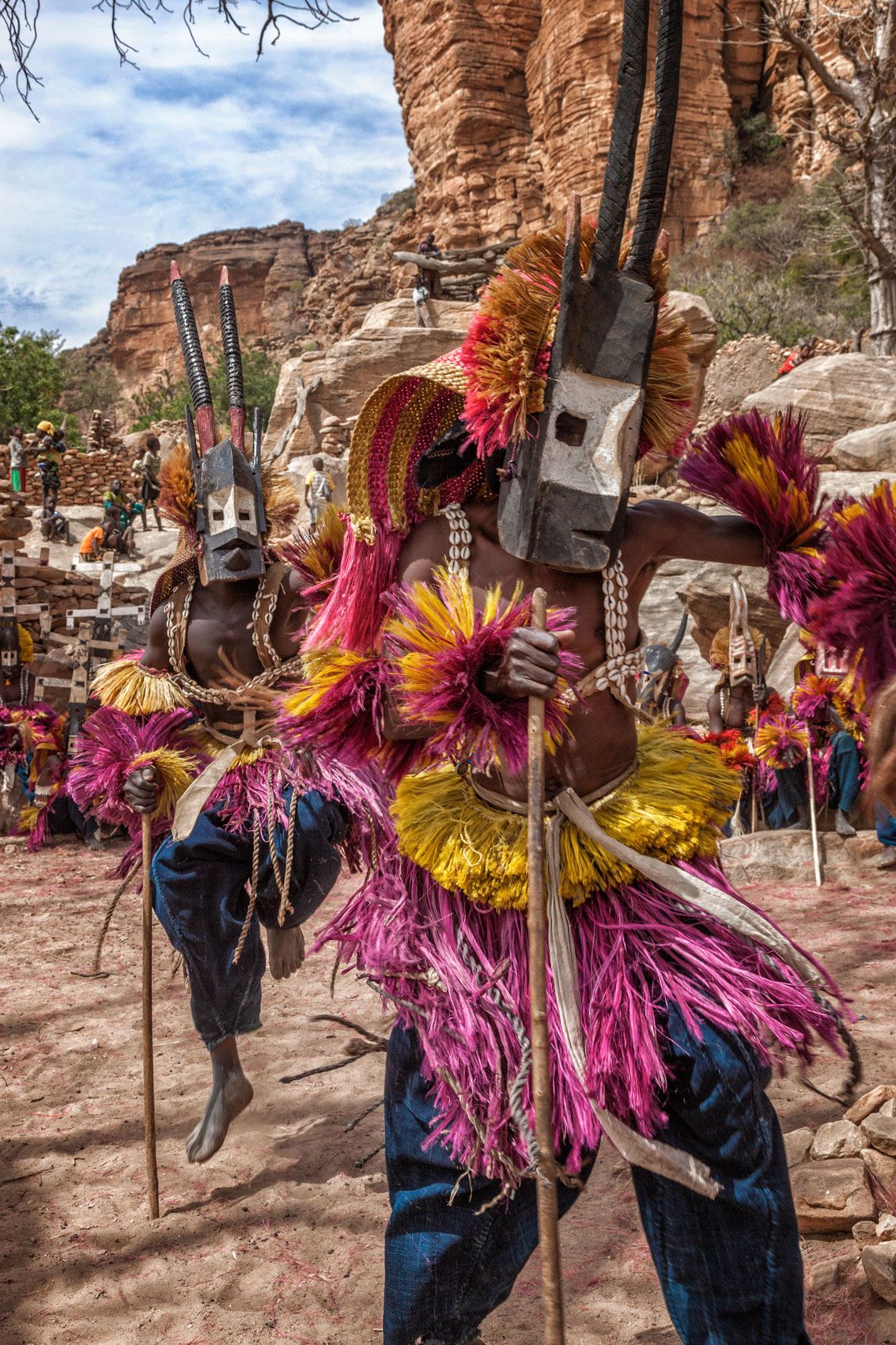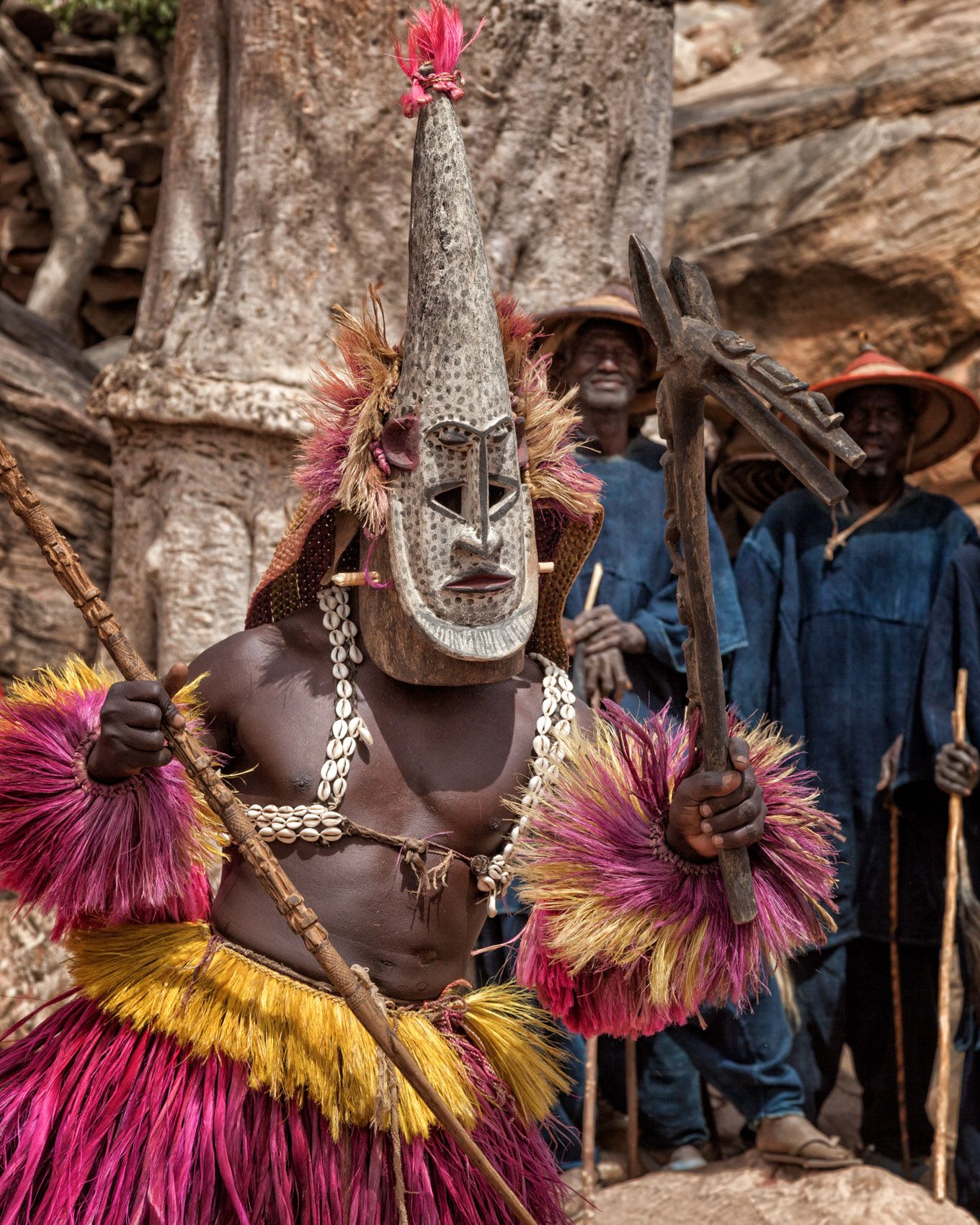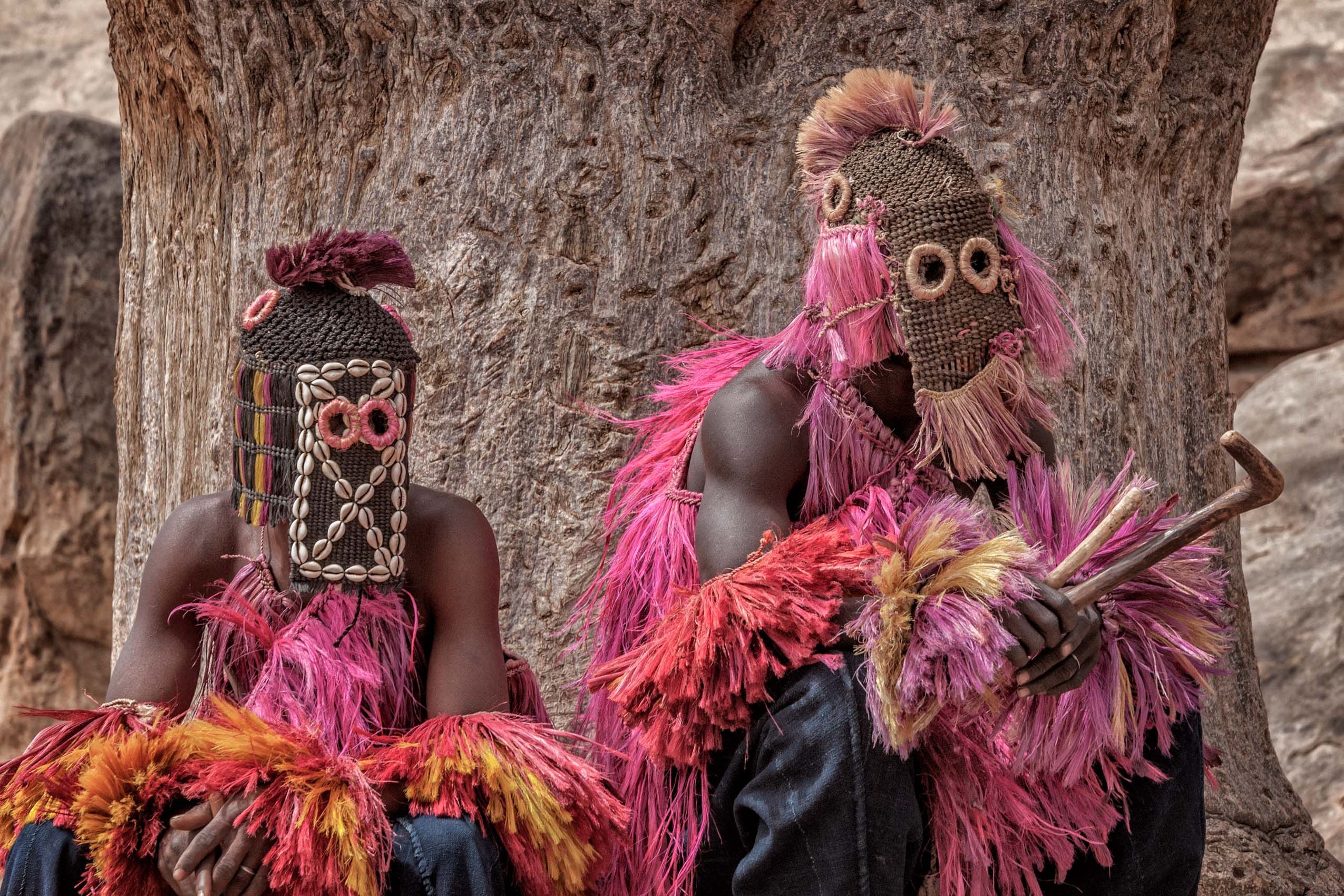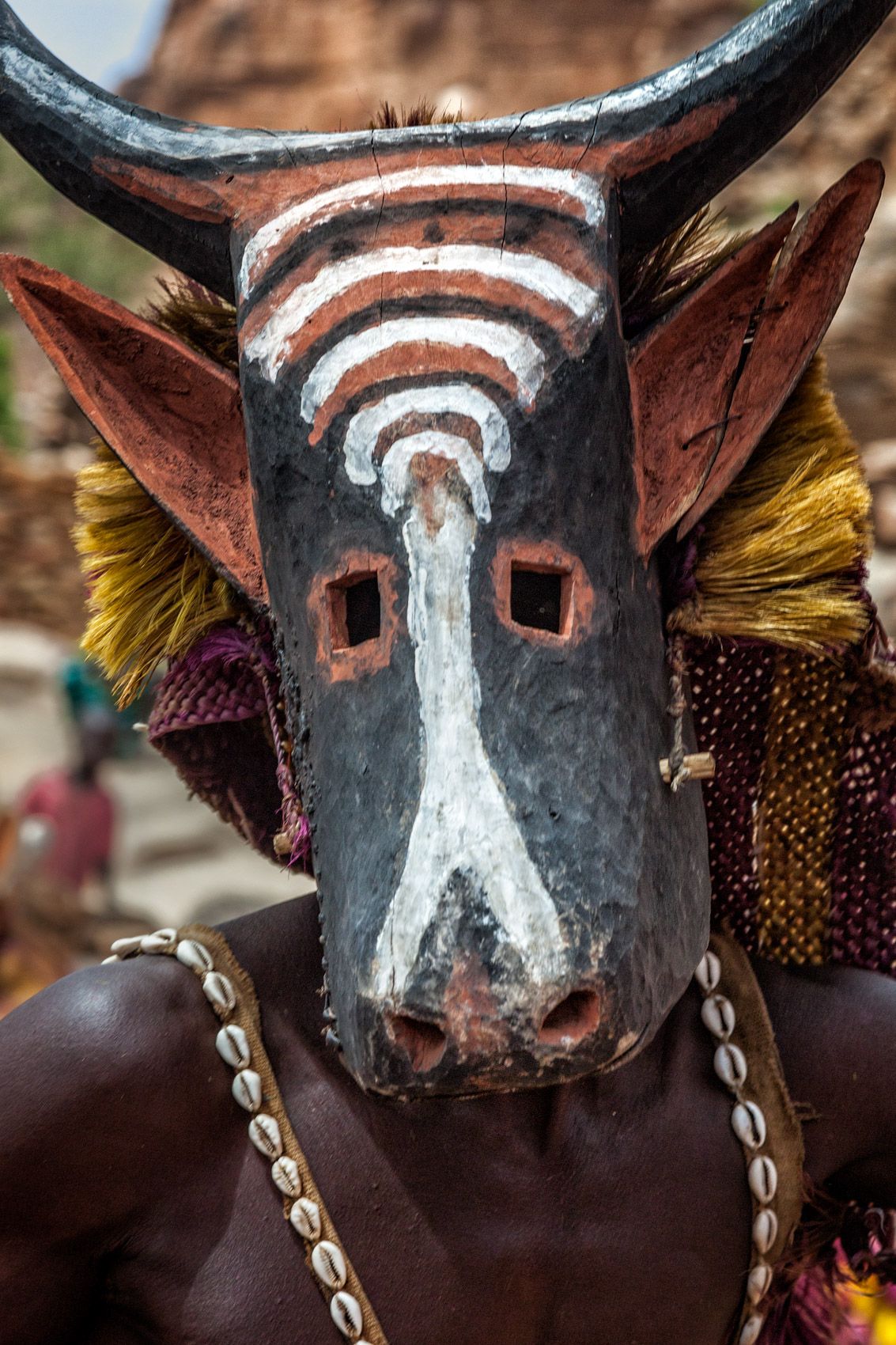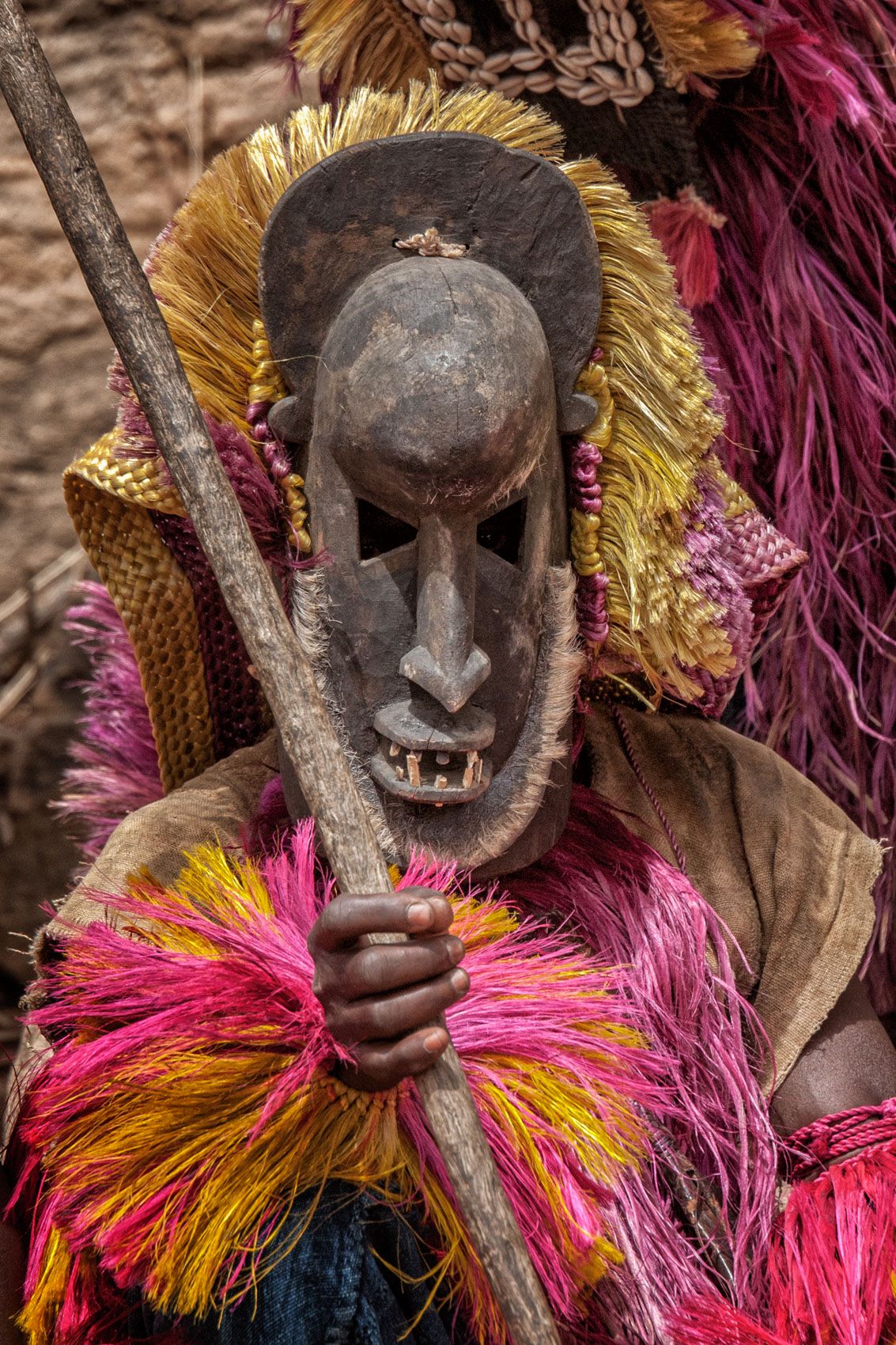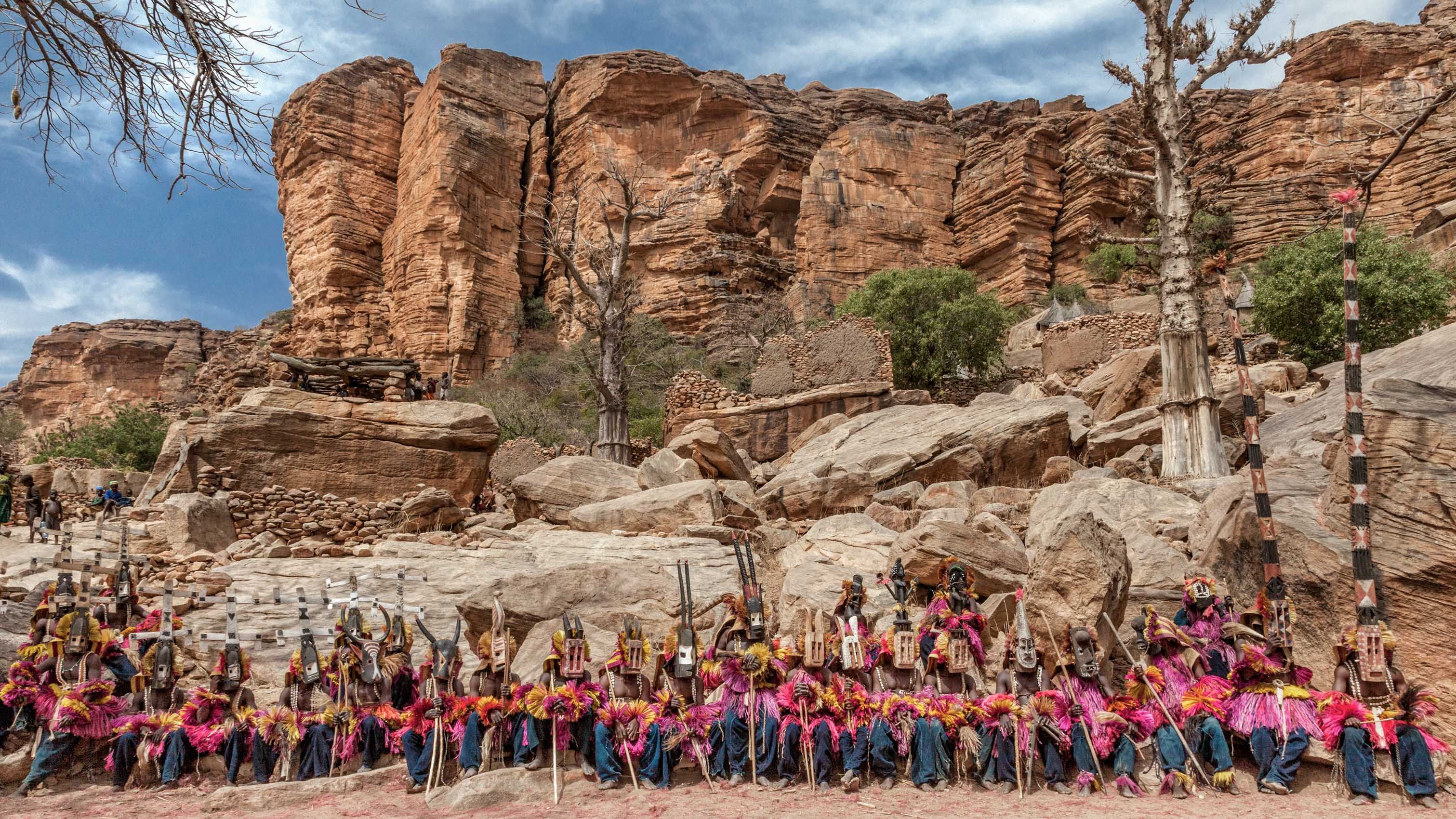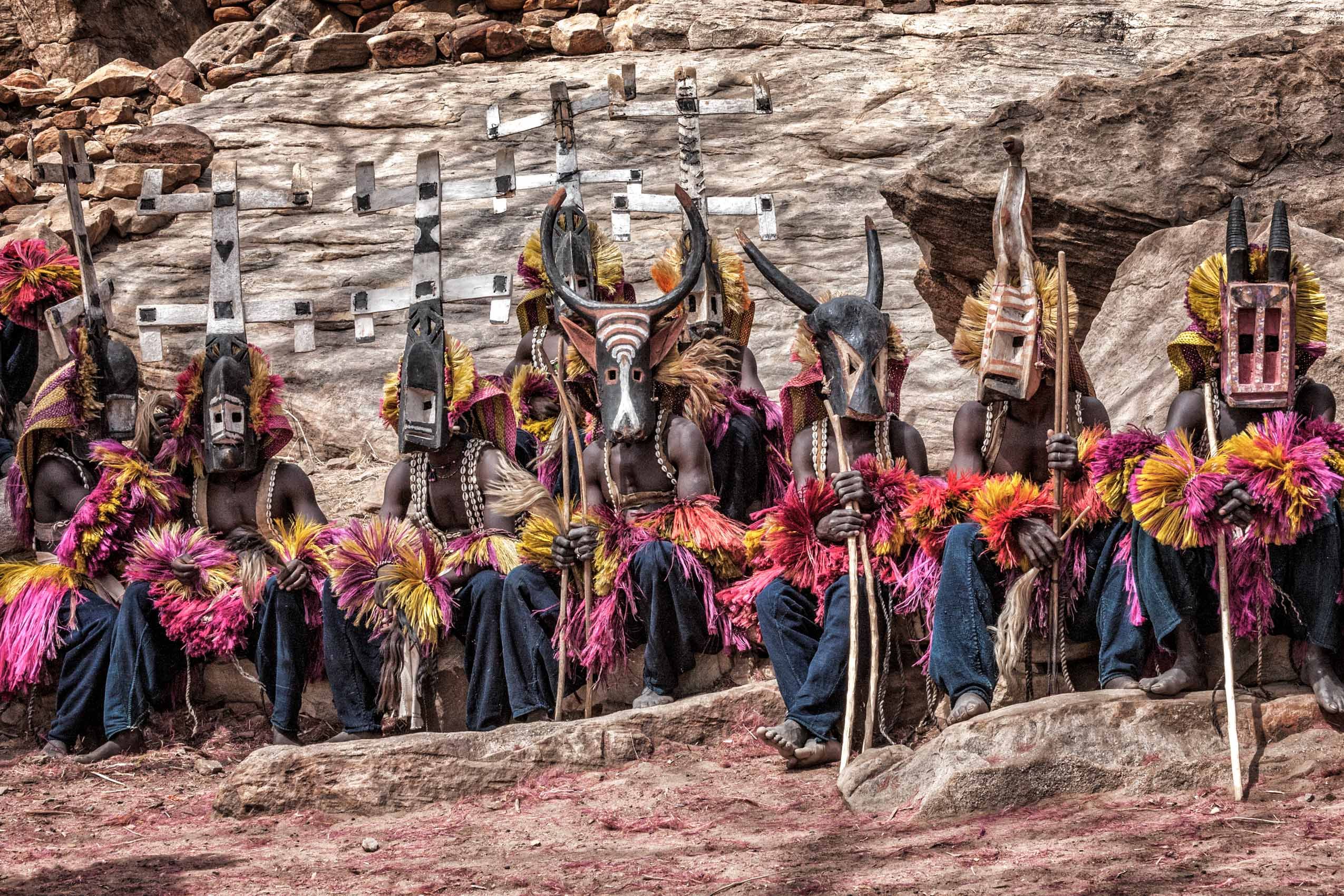MALI: In Dogon Country
The traditional homeland of the Dogon people of central Mali occupies the plateau and base of the Bandiagara Escarpment, a very long, steep and rough sandstone cliff face in the semi-arid Sahel zone separating the desert to the north from the tropical forests to the south. Although ecological degradation, political conflict, and tourism are now disrupting their traditions, until relatively recently the Dogon had maintained their rich and complex culture in relative isolation. (It has become significantly more difficult and more dangerous to visit the area now than it was when I visited in 2010.) The region of the Bandiagara Escarpment may have been occupied for more than two millenia. By the 11th century, a hunter-gatherer group called the Tellem constructed cave dwellings and granaries high on the cliff face; these can still be seen today, although the Tellem had abandoned the area by the nineteenth century. The Dogon arrived in the area in the 14th or 15th century, probably from the northeast of the continent. The oldest Dogon settlements were along the lower cliffs of the escarpment for protection from enslavement and forced conversion but they now also inhabit the upper plateau and the flatland below the escarpment. Traditionally animist, significant minorities are now also Muslim and Christian. The images in this portfolio were made in several villages in various parts of the topography and record some of the basic roles, structures and cultural features of Dogon society. Individuals shown here include a Hogon, the spiritual leader of a village, chosen from among the oldest males, who must live apart by himself and receive wisdom at night from Lebe, the sacred serpent god of the earth and the agricultural cycle; a hunter, the human link between the village and bush, who dwells in a lodge decorated with animal totems; and a diviner, who at dusk at the edge of the village prepares an elaborate grid of symbols in the sand, scattered with corn kernels; the next morning he will return to examine the patterns that a fox’s paws have made in his designs, which he will interpret as oracular answers to his questions. The characteristic structures include the now abandoned cave dwellings, houses and granaries of both Tellem and Dogon high on the cliffs; the toguna or meeting place for male elders, built low so as to discourage physical altercations; the flat roofed rectangular buildings that constitute family dwellings; and the various types of granaries, some for storing harvested grain and others for the exclusive use of women for storage of their personal possessions; a Sudanese style mud mosque that dominates the village of Banani; and the grotto painted with family and clan symbols outside the village of Sanga, where male circumcision rituals are performed. Examples of Dogon sculpture and design can be seen on many walls and buildings. The most celebrated Dogon art form is the mask, which is central to the ritual dance called the dama, which enables the souls of the dead to depart the world of the living. The more than sixty types of masks symbolize animals and spirits as well as human attributes. For example, the horned mask is a mythical antelope; the masked dancer on stilts is a water bird; the towering sirige mask symbolizes a tree connecting the terrestrial and spiritual worlds. The ritual dances are performed by young men initiated into the awa or mask society, and decorated for the occasion with brilliantly colored hibiscus fibers and cowrie shells. Today, with the decline of traditional animist religion and the expense involved in their preparation, the dances are most frequently performed for the entertainment of tourists; nevertheless, this enables the Dogon cultural and artistic traditions to be maintained for future generations.

